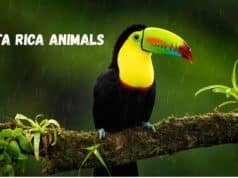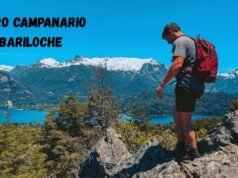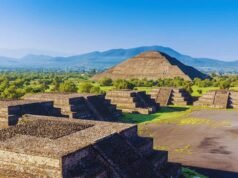The Great South of Madagascar Circuit is a thrilling journey into one of the planet’s most unique and biodiverse regions. This route stretches from the central highlands to the southern coast, showcasing Madagascar’s stunning landscapes, diverse wildlife, and rich cultural tapestry. Renowned for its variety of terrains—from lush rainforests and limestone canyons to the sapphire-blue waters of coastal villages—this circuit offers an unforgettable experience for travelers seeking nature, adventure, and authentic cultural encounters.
Why Visit the Great South of Madagascar?
The Southern Circuit encapsulates the essence of Madagascar’s unparalleled natural and cultural wealth. Travelers are drawn to its breathtaking national parks, unique flora and fauna, and the vibrant traditions of its native communities. From the towering baobabs to the endemic lemur species and the diverse ethnic groups such as the Bara and Mahafaly, the Great South offers an immersion into Madagascar’s distinct identity.
Read: Top 10 Warmest Places in Florida in December
Madagascar Southern Circuit Route
The route for the Great South of Madagascar generally begins in the capital city, Antananarivo, and journeys southward through key regions like Antsirabe, Ranomafana, Isalo, and Toliara. Travelers experience diverse ecosystems, encounter endemic wildlife, and engage with Madagascar’s tribal cultures along the way. Popular highlights include Andasibe-Mantadia National Park, Anja Reserve, and the beaches of Ifaty.
Best Time to Visit the Great South of Madagascar
For those planning Madagascar tours, the dry season from April to October is the best time to explore the Southern Circuit. During these months, wildlife is more active, and outdoor conditions are more comfortable. The rainy season, from November to March, brings lush landscapes but can cause challenges such as muddy trails and impassable roads.
Essential Preparations and Travel Tips
Preparing for Madagascar’s Southern Circuit requires proper planning. Here’s a quick checklist:
- Travel Permits: Obtain any required permits for national parks in advance.
- Vaccinations and Health: Get recommended vaccinations and pack essential medications.
- Packing Essentials: Lightweight clothing, sturdy walking shoes, insect repellent, and plenty of sunscreen.
- Cash and Payments: Many remote areas only accept cash, so carrying local currency is advised.
How to Get to the Great South of Madagascar
Most travelers fly into Ivato International Airport in Antananarivo. From there, guided tours or hired 4×4 vehicles are recommended for exploring the Southern Circuit due to the challenging road conditions.
Read: Best Places to Visit on Vancouver Island
Key Destinations Along the Madagascar Southern Circuit
The Great South circuit includes several iconic destinations, each offering unique attractions. Here’s a breakdown of the major stops:
Andasibe-Mantadia National Park
Located east of Antananarivo, Andasibe-Mantadia is a haven for Madagascar’s unique wildlife, particularly the Indri lemur. Its lush rainforest environment offers excellent opportunities for birdwatching and nature hikes.
Antsirabe: City of Thermal Springs
A charming highland town, Antsirabe is known for its hot springs and colorful rickshaws. It’s an ideal spot to relax and experience local handicrafts.
Ambalavao and Anja Community Reserve
This small town is famous for traditional silk weaving and zebu markets. Nearby, the Anja Reserve is a community-managed park where ring-tailed lemurs thrive in scenic granite rock formations.
Ranomafana National Park
This tropical rainforest park is teeming with biodiversity, including rare lemur species like the golden bamboo lemur. Ranomafana is also renowned for its hot springs, providing a relaxing contrast to the adventurous hikes.
Isalo National Park
Known as Madagascar’s Grand Canyon, Isalo features sandstone formations, deep canyons, and natural pools. It’s a favorite among hikers and photographers.
Toliara (Tuléar) and Ifaty
Situated on the southwestern coast, Toliara and Ifaty offer beautiful beaches, coral reefs, and opportunities for water activities like snorkeling and diving.
Read: Why Limestone Tubing Should Be on Your Bucket List?
Andasibe-Mantadia National Park: First Stop for Wildlife Enthusiasts
Just a short journey from the capital, Andasibe-Mantadia National Park is home to Madagascar’s largest lemur species, the Indri. Guided hikes offer the chance to spot unique animals such as chameleons, rare birds, and various lemur species, making it a must-see destination for nature lovers.
Antsirabe: City of Thermal Springs
Antsirabe’s cool climate and picturesque streets make it a popular destination. Visitors can explore the natural hot springs, visit local craftspeople, and even try a ride in the city’s colorful pousse-pousse (rickshaws).
Ambalavao and Anja Community Reserve: A Haven for Lemurs
Ambalavao provides a genuine Malagasy experience with its vibrant zebu cattle market and workshops where handmade silk is crafted. The nearby Anja Reserve is community-operated, helping protect the local ecosystem while offering visitors an up-close view of ring-tailed lemurs.
Ranomafana National Park: A Tropical Rainforest Paradise
Ranomafana, one of Madagascar’s most famous parks, is ideal for spotting lemurs, particularly the critically endangered golden bamboo lemur. The park’s network of trails and hot springs draws ecotourists from around the world.
Isalo National Park: Madagascar’s “Grand Canyon”
Characterized by sandstone formations, deep gorges, and palm-lined oases, Isalo National Park is a visual masterpiece. Visitors can trek through unique landscapes and cool off in natural swimming holes surrounded by dramatic scenery.
Toliara (Tuléar) and Ifaty: Coastal Wonders
For travelers looking to unwind, the coastal areas of Toliara and Ifaty offer beautiful beaches, coral reefs, and mangrove forests. Activities here include diving, whale-watching, and observing the traditional fishing methods of the Vezo people.
Read: Manaslu Circuit Trek Cost and Itinerary
Cultural Experiences: Tribes and Traditions of Southern Madagascar
The Southern Circuit is an excellent opportunity to meet the indigenous communities of Madagascar. The Bara, Antandroy, and Mahafaly tribes each have distinct customs, traditional attire, and ceremonies that reflect Madagascar’s diverse heritage.
Unique Wildlife of Madagascar’s Southern Circuit
Madagascar’s unique ecosystem is home to over 100 species of lemurs, dozens of chameleon species, and countless endemic plants. From baobabs and rare orchids to reptiles and amphibians found nowhere else, the island’s biodiversity is unmatched.
Accommodation Options Along the Circuit
From eco-lodges in the national parks to seaside hotels in Toliara, a range of accommodations is available. Many lodges prioritize sustainability, offering guests an eco-friendly way to explore Madagascar’s beauty.
Sustainable and Ethical Tourism Practices
Responsible tourism is vital to preserving Madagascar’s fragile ecosystems. Visitors are encouraged to respect park guidelines, support community-run reserves, and minimize their environmental footprint during their travels.
Read: Unforgettable Ways to Celebrate Special Occasions in Dubai
Challenges and Safety Considerations
Roads in southern Madagascar can be rugged, so a 4×4 vehicle is recommended. In remote areas, access to medical facilities may be limited. Traveling with a knowledgeable guide and taking standard safety precautions are advised.
FAQs About the Great South of Madagascar Circuit
What is the best way to travel the Southern Circuit?
A guided tour or self-driving in a rented 4×4 vehicle is recommended due to the condition of the roads.
Are there any health precautions I should take?
Vaccinations, malaria prophylaxis, and basic medications are advisable, as some regions may have limited access to healthcare.
Can I see lemurs along the Southern Circuit?
Yes, many national parks and reserves, like Ranomafana and Anja, are home to several species of lemurs.
Is the Southern Circuit suitable for families?
While some parts can be challenging, many areas are family-friendly with manageable hikes and accessible wildlife viewing.
What cultural experiences are available?
You can visit villages, participate in traditional ceremonies, and learn about the lifestyles of the Bara, Mahafaly, and Vezo tribes.
Do I need a guide to visit the national parks?
Hiring a local guide is highly recommended, as they can help spot wildlife and navigate trails safely.
Conclusion
The Great South of Madagascar Circuit is a journey through some of the planet’s most extraordinary landscapes, unparalleled biodiversity, and fascinating cultures. Whether trekking through rainforests, marveling at sandstone canyons, or lounging by turquoise shores, each stop along the circuit promises an unforgettable experience. With careful planning and respect for the local environment, travelers can enjoy this magical corner of the world while supporting its preservation for generations to come.















